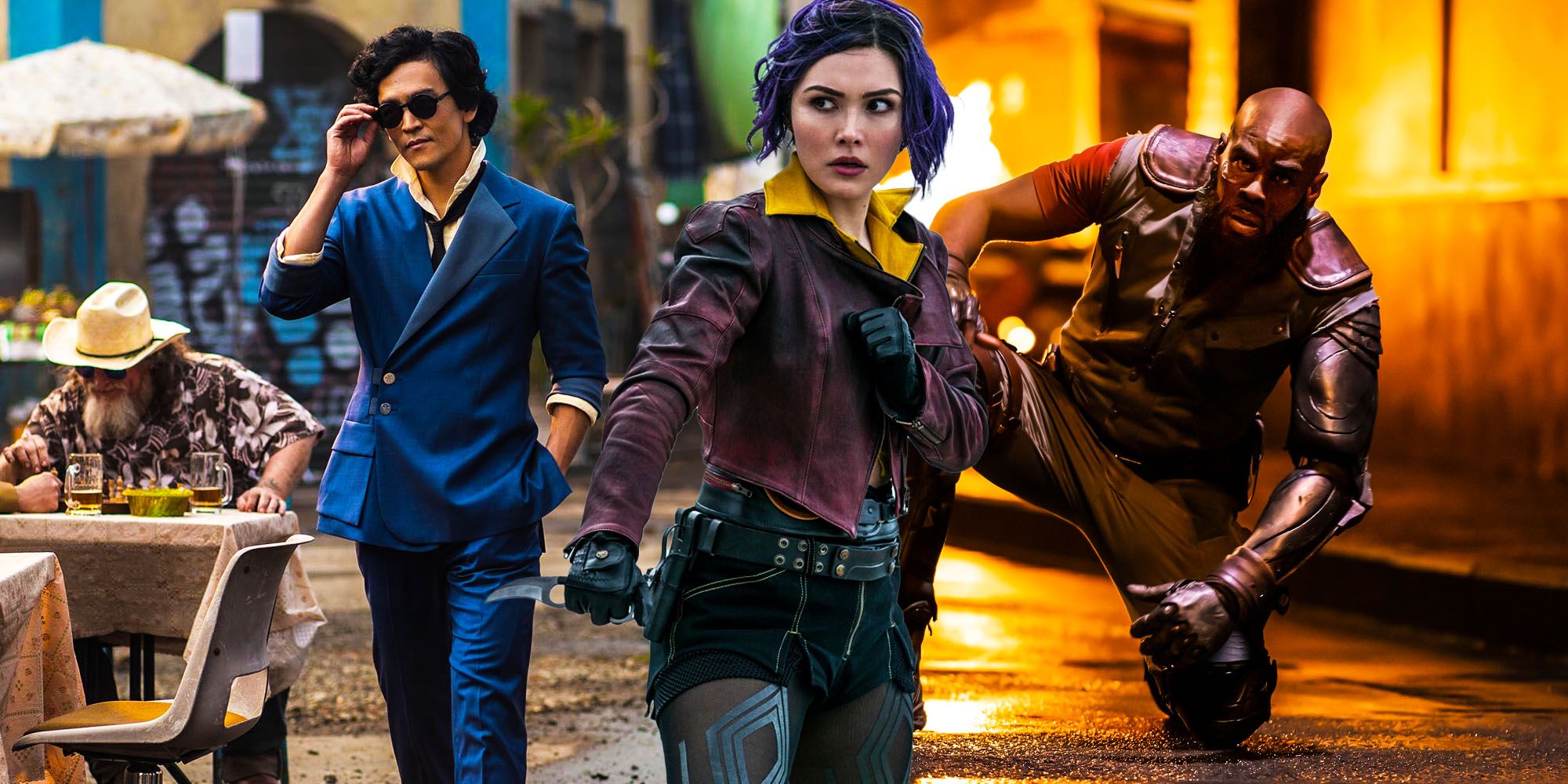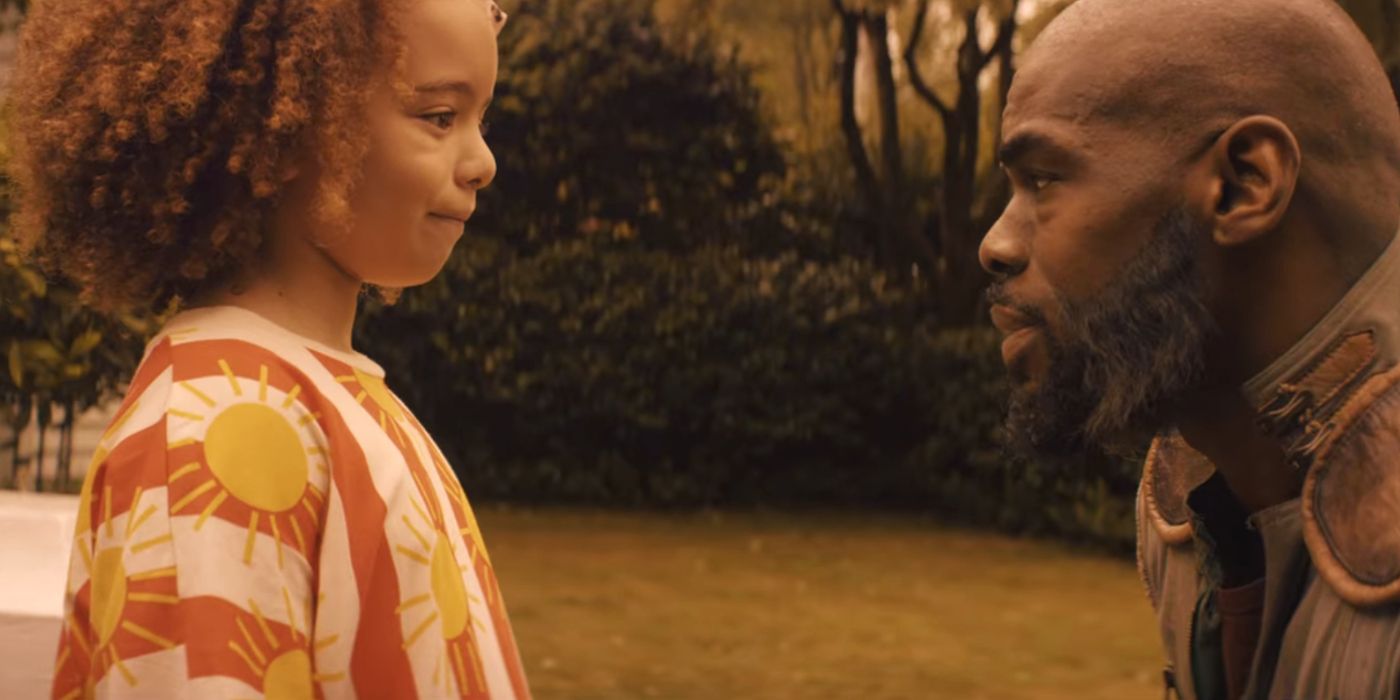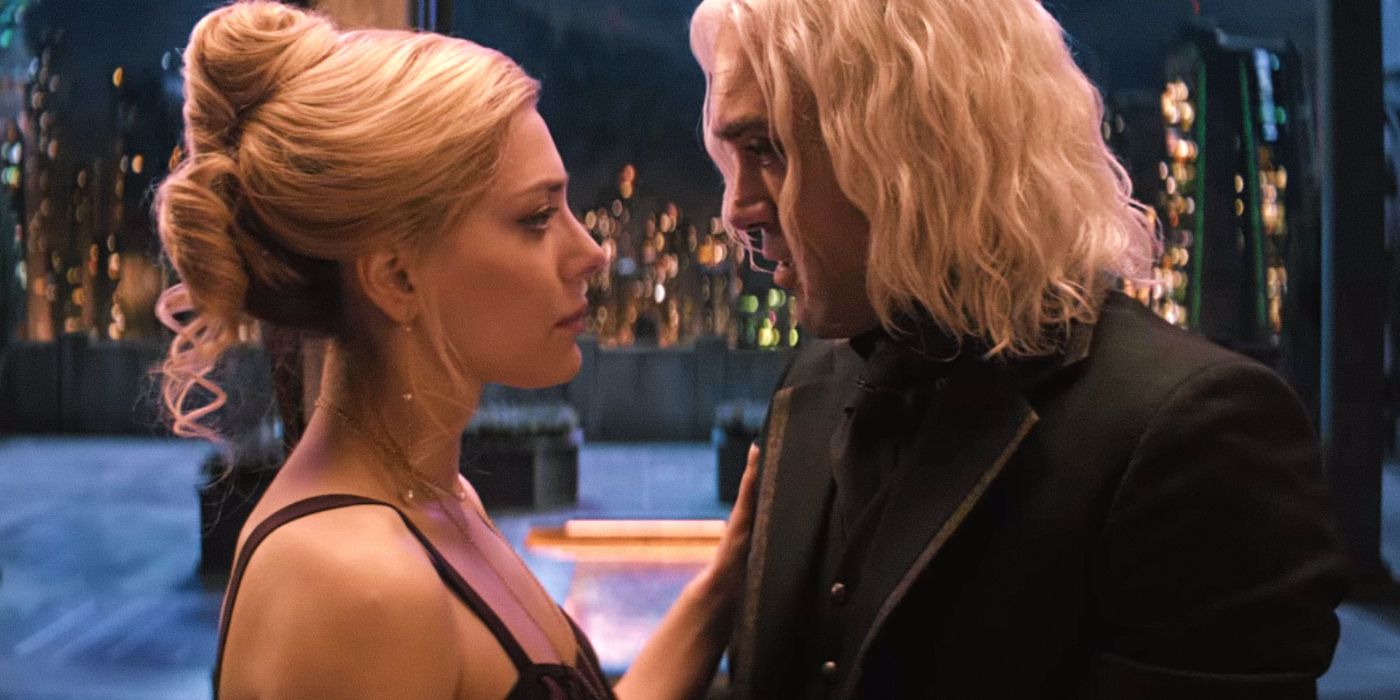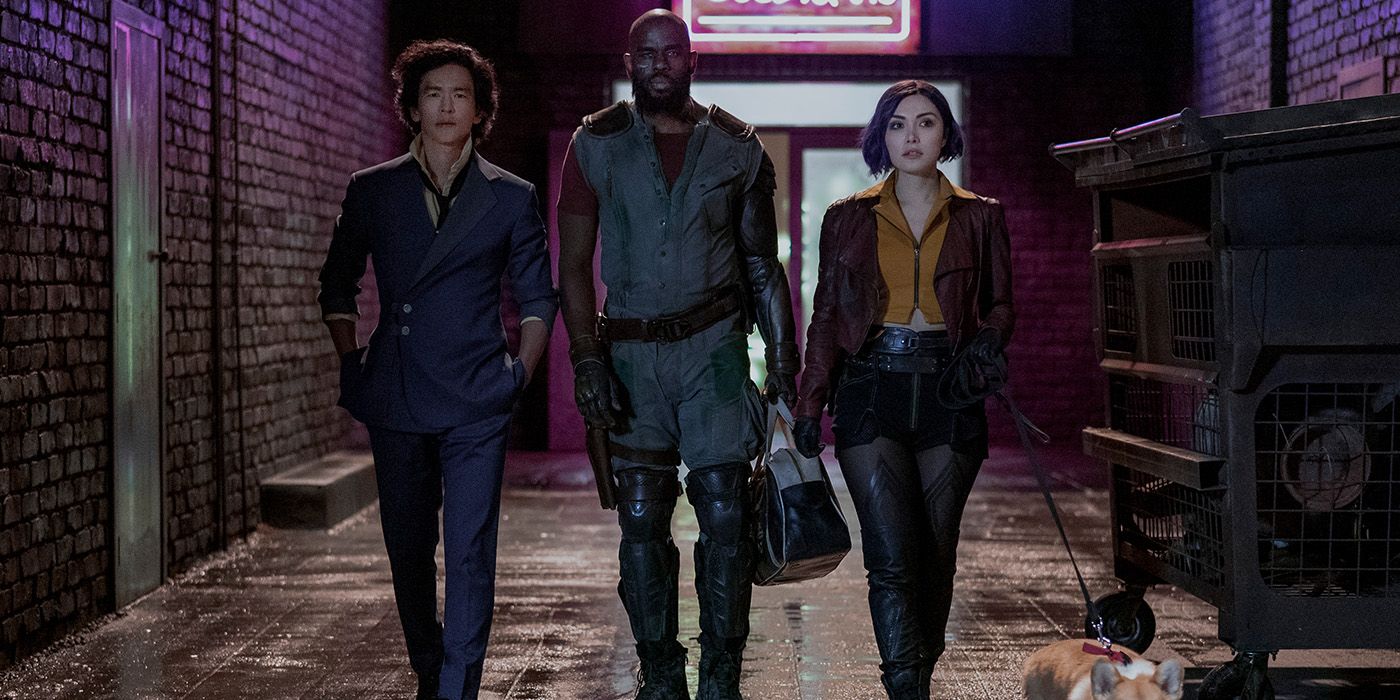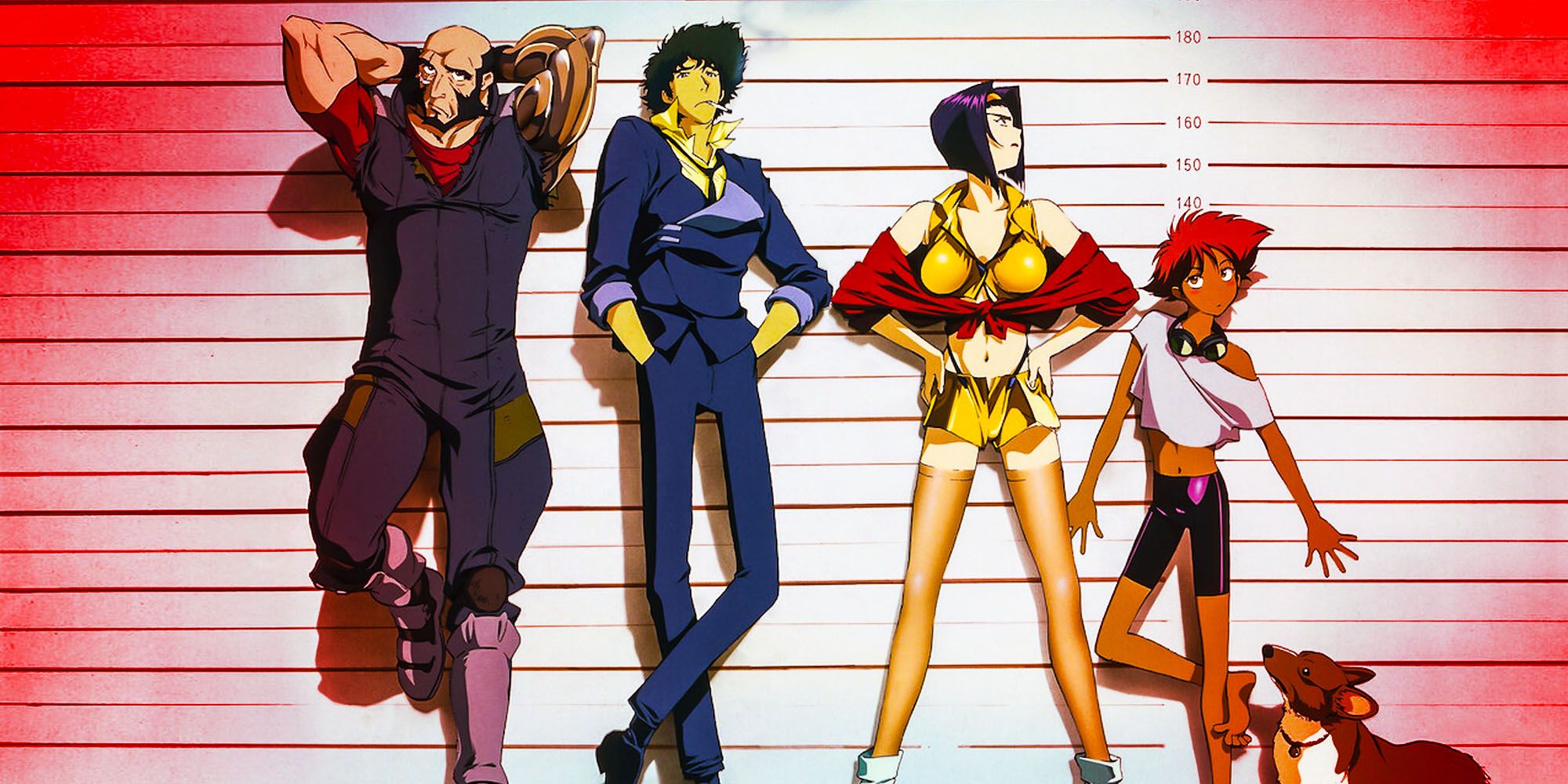When trying to pinpoint what exactly went wrong with Netflix's live-action Cowboy Bebop show, fans struggle to identify just one thing. The series is certified rotten by critics on Rotten Tomatoes with a 46 percent rating, and fans of the original Cowboy Bebop anime, which is often considered one of the greatest of all time, were predominantly disappointed by what they'd seen. Of course, any attempted adaptation of such a beloved work was never going to please everyone, but Netflix's live-action show seemed to have crucially misunderstood something along the way.
The lackluster response is especially disappointing considering how promising Cowboy Bebop appeared leading up to its Netflix release. The first Cowboy Bebop trailer alleviated concerns from fans because of its fun look, with multicolored panels seemingly paying homage to a manga format, and comedic bickering between the leads. On top of that, people were excited for the return of the anime's original composer, Yoko Kanno, and the original director Shinichirō Watanabe's involvement as a consultant on the Netflix series.
Despite these elements, Netflix's Cowboy Bebop show fell short for many viewers, especially those familiar with the anime. Netflix has not yet greenlit a season 2, but if they do, hopefully the writers will take such criticisms into consideration moving forward. Here are some of the reasons why Netflix's live-action Cowboy Bebop ultimately failed to live up to expectations.
The Live-Action Show Did Not Trust Its Audience
Due to the difference in mediums, it is impossible to perfectly recreate certain elements from a 2D anime into live-action, but Netflix's Cowboy Bebop tried to anyway, fumbling the hardest in this regard with some of its humor and corny dialogue. In episode 3, Jet Black (Mustafa Shakir) accused Woodcock (Carmel McGlone) of blackmail, to which she said, in a playfully flirty tone, "Hmm, damn right it is because, Jet, you are Black and you are male." Many fans took to the internet to complain about that line, which was obviously not the reaction the Cowboy Bebop writers were going for. Such a line might have felt less jarring in a cartoon, which can occasionally get away with certain dialogue choices that in live-action simply comes across as trying too hard. One Cowboy Bebop review (via Polygon) said it best:
"But the stark disparity between the exaggerated tone of the Netflix series and that of the original 26-episode anime (and interquel feature film) feels like a decision by showrunner André Nemec to interpret the idea of what a cartoon would feel like in live-action rather than create a more straightforward version of Cowboy Bebop."
The acting sometimes leaned more toward exaggeration instead of the subtle nuance present in the Cowboy Bebop anime. For instance, although Netflix's interpretation of Faye Valentine (Daniella Pineda) was overall enjoyable, at times she exerted an almost theatrical sense of confidence that detracted from her credibility, despite—or perhaps because of—her relentlessly high energy and vulgar comebacks. Similarly, Jet's and Spike Spiegel's (John Cho) better developed backstories, with additional flashbacks of Spike and Julia (Elena Satine) and the introduction of Jet's young daughter, mainly served to further explain character details that didn't really need explained. It was as if Netflix's Cowboy Bebop did not trust its audience to follow along without peppering the story with increasingly overt clarifications of events. However, its worst change was perhaps Cowboy Bebop's alterations to Vicious (Alex Hassell).
Netflix Weakened Cowboy Bebop's Greatest Villain
Netflix's Cowboy Bebop did its best to flesh out each of the main characters, and most of these efforts improved upon the source material, but deepening Vicious' character only made him worse. In the original anime, Vicious was quiet and cunning. His reserved nature allowed any moment in which he did lash out to further embody his namesake. The Cowboy Bebop anime did not reveal much about its primary villain until the Cowboy Bebop's final confrontation between Vicious and Spike, allowing his mystery to intimidate viewers even more. Netflix introduced Vicious much earlier in the storyline and developed his character throughout Cowboy Bebop season 1, giving him a complex backstory that helped to explain his motivations for taking over the Syndicate and turning on Spike. Yet, by making him more knowable, Cowboy Bebop ultimately made Vicious less intimidating. He lacked the sense of control and sophistication he used to possess, turning Vicious into less of a threat to Spike and the rest of the Bebop crew than he was in the anime. Giving Julia the chance to double-cross him in the finale and become the new head of the Syndicate was a fun twist, but unless Netflix is willing to make her a proper bad guy in his place, then Cowboy Bebop lost its most frightening villain in the process.
Netflix's Cowboy Bebop Lacked A Sense Of Place
Intergalactic space travel was vital to the Cowboy Bebop anime as the Bebop crew traveled between planets seeking out their next bounty. Although the show did not spend a lot of time on many of the planets they visited, it still established a strong sense of place with fun and unique details in each location that fleshed them out in short amounts of time so that audiences could easily distinguish them from each other. Netflix's Cowboy Bebop lacked that creativity, and many of the places Spike, Jet, and Faye visited looked and felt eerily similar to each other. It was often difficult to determine where exactly the characters were at any given time. The creators had the opportunity to live up to the show's science fiction influences with imaginative locations, but thoroughly missed the mark.
Netflix Misunderstood Cowboy Bebop's Themes
One of the Cowboy Bebop anime's most integral themes was loneliness. The Bebop crew was brought together not so much because they liked each other, but out of a desperation and certainty that they had nowhere else to go. They were all running from something and didn't care one way or another what anyone else on board might have done in the past. Every member of the Bebop crew embraced an unusual kind of found family who spent more time apart than together, and who didn't care if it was all temporary. Conversely, Netflix's version cared too much about who all of its characters used to be, and a lot of the live-action Cowboy Bebop's conflict revolved around this idea. Unlike in the anime, here Jet did not know that Spike used to be a member of the Syndicate, and Spike carefully kept this information a secret for fear that Jet, a former cop, would react poorly. This, strangely, also seemed to undercut Cowboy Bebop's emphasis on the crew's deep bond with each other, leaving viewers confused about what message the show was trying to convey. By not exploring themes of loneliness and existential despair, present throughout each episode of the anime as the flipside to the Bebop crew's fun adventures, Cowboy Bebop became just another fast-paced action series with nothing deeper to offer.

